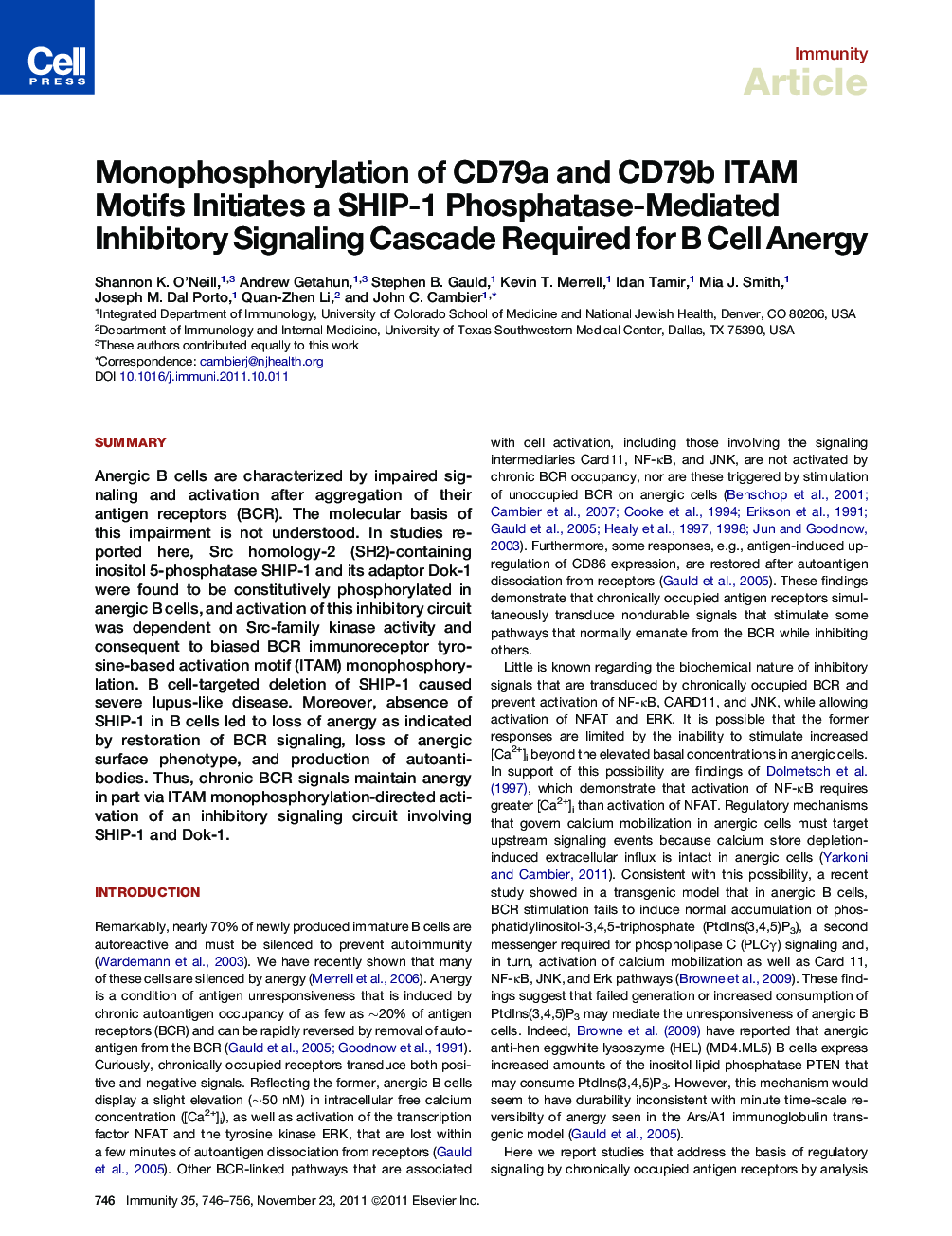| Article ID | Journal | Published Year | Pages | File Type |
|---|---|---|---|---|
| 3353465 | Immunity | 2011 | 11 Pages |
SummaryAnergic B cells are characterized by impaired signaling and activation after aggregation of their antigen receptors (BCR). The molecular basis of this impairment is not understood. In studies reported here, Src homology-2 (SH2)-containing inositol 5-phosphatase SHIP-1 and its adaptor Dok-1 were found to be constitutively phosphorylated in anergic B cells, and activation of this inhibitory circuit was dependent on Src-family kinase activity and consequent to biased BCR immunoreceptor tyrosine-based activation motif (ITAM) monophosphorylation. B cell-targeted deletion of SHIP-1 caused severe lupus-like disease. Moreover, absence of SHIP-1 in B cells led to loss of anergy as indicated by restoration of BCR signaling, loss of anergic surface phenotype, and production of autoantibodies. Thus, chronic BCR signals maintain anergy in part via ITAM monophosphorylation-directed activation of an inhibitory signaling circuit involving SHIP-1 and Dok-1.
► SHIP-1 and Dok-1 are tyrosine phosphorylated and activated in anergic B cells ► B cell-targeted deletion of SHIP-1 leads to loss of B cell anergy and autoimmunity ► Igα (CD79a) ITAMs are chronically monophosphorylated in anergic B cells ► Monophosphorylated CD79 ITAMs activate the inhibitory SHIP-1-Dok-1 signaling circuit
